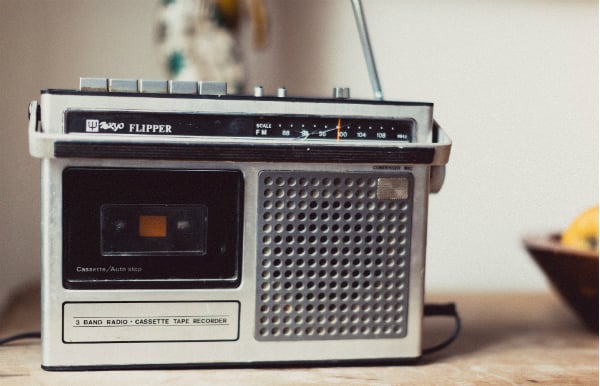Radio is the type of media that has no competitors in terms of access. Radio is free of the time-consuming and costly visual component and thanks to this, it can be both quick and no-pressure (I.e. played in the background). In other words, it can be how it wants to be.
In Armenia, the demand for radio was felt most in the early days of independence, when heavyweight television was unable to fulfill the wishes of the audience (also for objective reasons, since regular electricity outages at the time turned television into a paralyzed media).
Radio flourished because
(a) it was the only media that worked without fail and could be found in almost every home,
(b) it began to broadcast music that was on lockdown during the Soviet years, and
(c) a new generation of journalists and hosts appeared whose manner of speaking was beyond stereotypes — it could be said, sociable. And that was alluring and fresh.
But very quickly radio surrendered its positions. One of the main reasons perhaps was that no serious investments (including in terms of ideas) were made.
Many radio stations, it seems, limited themselves to broadcasting music non-stop. Those stations that claimed to have their own character (or rather, recognizable voices) were forced to lose their audience year by year. New blood and a new style are good at the initial stage, then high-quality content must follow; otherwise, audience loss is inevitable.
The radio “boom” stood still and the fragmentation, narrowing, and if it can be said, the specification of the already small audience began, which was due mainly to the preferences for music. In recent years, radio stations’ playlists have been edited mostly according to musical genres.
Some stations disappeared (for example, Radio Jazz and Nor Radio), while stations broadcasting more mainstream music came forward (Radio Jan and Lav Radio). And if the claim that we are what we listen to is correct, then we are now like this.
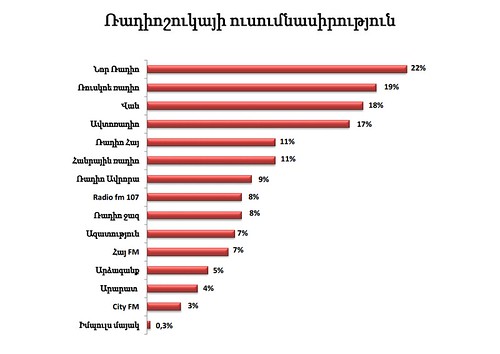 Survey of the radio market (November 2011)
Survey of the radio market (November 2011)
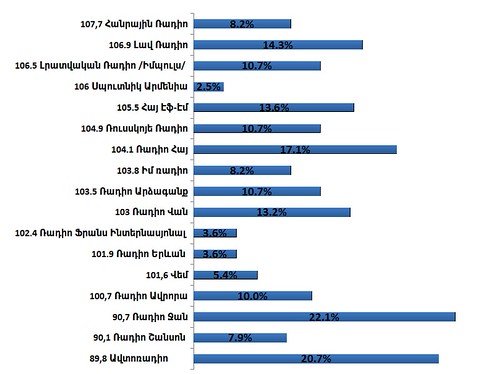 Survey of the radio market (September 2015)
Survey of the radio market (September 2015)
This research was done by the Armenian representation of Gallup International Association, which has been regularly monitoring the radio market for four consecutive years. The last research survey examining radio audiences was conducted from August 28 to September 8, 2015, in Yerevan. The proportional study was conducted by phone and took into account the age and sex composition of Armenia’s population. There were 800 respondents.
These surveys, conducted each quarter, allow us to understand radio audience preferences, which is interesting from the perspective of not only advertisers, but also sociologists.
During these four years, the radio audience has decreased slightly.
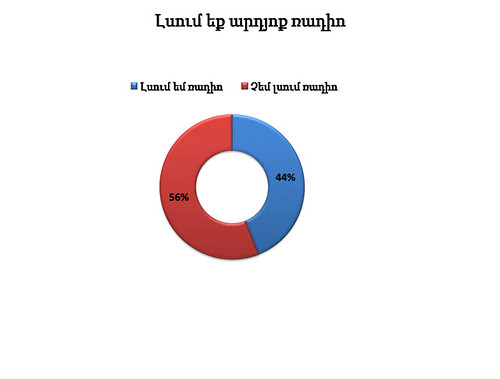 Survey of the radio market (November 2011)
Survey of the radio market (November 2011)
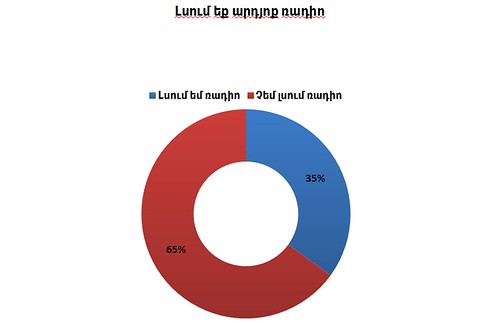 Survey of the radio market (September 2015)
Survey of the radio market (September 2015)
In any case, it’s clear that radio put the emphasis on music that has a greater consumer demand: Russian estrada (with all its modifications, even up to “criminal” poetics) and Armenian pop (including the light and tough rabiz stylizations).
The news and informational programs didn’t offset the flood of music. Talk radio, unlike music radio, was mainly represented by Lratvakan Radio (“News Radio”) and public radio. This, perhaps, was to be expected, since it’s easy to compile and edit music, and radio in Armenia took the easy road.
Listening to the radio is a process carried out alongside another, main task. For instance, you listen to the radio while driving and on the road — also while creating (say, while painting or making dinner).
In this case, you pick the station that will choose your favorite music for you — and also the language and genre.
Now we can listen to Russkoye Radio (with Russian estrada); Autoradio (with hosts speaking a mix of Russian and Armenian); Radio Chanson (naturally, with a Russian prison repertoire); Radio Jan that broadcasts Armenian-language songs with, however, Arabic-Turkish melodic structures; the Armenian pop-rabiz Lav Radio; and other, different music channels that don’t require great efforts and work for a small audience.
Radio Yerevan, for example, tries to broadcast more restrained and high-quality music; Radio Van tries to maintain its audience with bilingual broadcasts.
It’s interesting that radio in Armenia today is just as Russian-language as it is Armenian-language. And I’m talking about not only the lyrics, but also programs. This probably requires further research. Perhaps Russian is the language of the future, and radio stations are the first to realize this. Or perhaps it’s the choice of language that hinders progress. This is unknown.
What is known is that radio in Armenia has seen better days. Both funding and new ideas are needed.
Nune Hakhverdyan

